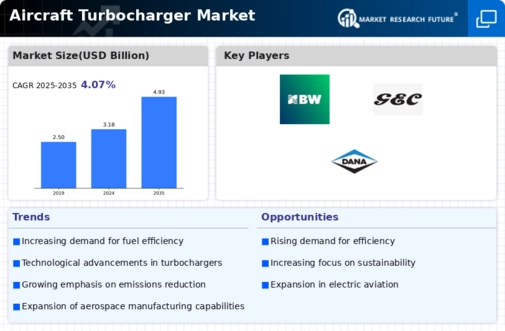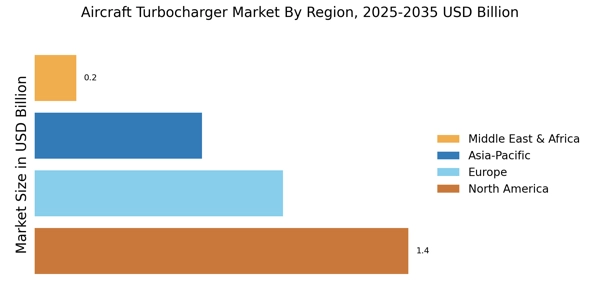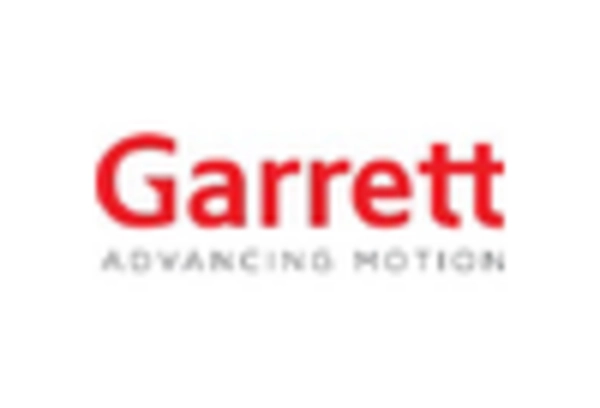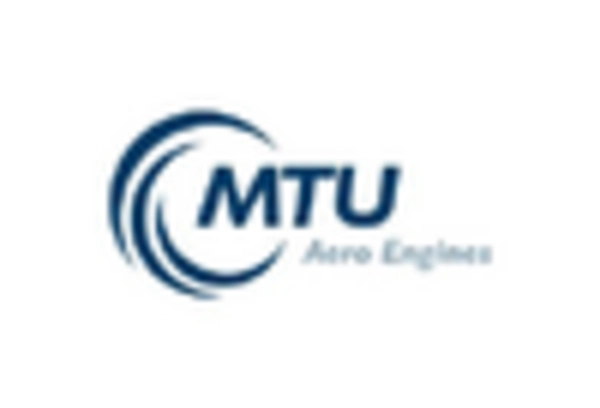Expansion of Aerospace Industry
The Aircraft Turbocharger Market is benefiting from the overall expansion of the aerospace sector. With increasing investments in aviation infrastructure and the emergence of new airlines, the demand for aircraft is on the rise. This expansion is accompanied by a growing need for advanced propulsion systems, where turbochargers play a crucial role. The market for aircraft is projected to grow at a compound annual growth rate of around 5% over the next decade. As the aerospace industry continues to flourish, the Aircraft Turbocharger Market is likely to experience parallel growth, driven by the need for enhanced performance and efficiency in new aircraft designs.
Rising Aircraft Production Rates
The Aircraft Turbocharger Market is poised for growth due to the rising production rates of commercial and military aircraft. Recent statistics reveal that aircraft production is projected to increase by approximately 4% annually over the next five years. This uptick in production is driven by a resurgence in air travel demand and the need for modernized fleets. Turbochargers are integral to enhancing the performance of these aircraft, ensuring optimal power output and efficiency. As manufacturers ramp up production to meet market demands, the Aircraft Turbocharger Market is expected to expand significantly, presenting opportunities for innovation and investment.
Increasing Demand for Fuel Efficiency
The Aircraft Turbocharger Market is experiencing a notable surge in demand for fuel-efficient solutions. As airlines and manufacturers strive to reduce operational costs, turbochargers play a pivotal role in enhancing engine performance and fuel efficiency. Recent data indicates that aircraft equipped with turbochargers can achieve fuel savings of up to 15% compared to traditional systems. This trend is further fueled by regulatory pressures aimed at reducing carbon emissions, compelling manufacturers to innovate and adopt advanced turbocharging technologies. Consequently, the Aircraft Turbocharger Market is likely to witness robust growth as stakeholders prioritize fuel efficiency in their operational strategies.
Advancements in Turbocharger Technology
Technological advancements are a key driver in the Aircraft Turbocharger Market. Innovations such as variable geometry turbochargers and electric turbochargers are revolutionizing engine performance and efficiency. These advancements enable better control over boost pressure, leading to improved throttle response and reduced lag. Furthermore, the integration of advanced materials and manufacturing techniques enhances the durability and performance of turbochargers. As these technologies continue to evolve, they are likely to attract investment and interest from manufacturers seeking to enhance their product offerings. The Aircraft Turbocharger Market stands to benefit from these technological strides, potentially leading to increased market share and competitiveness.
Growing Focus on Environmental Regulations
The Aircraft Turbocharger Market is significantly influenced by the growing focus on environmental regulations. Governments and regulatory bodies are increasingly implementing stringent emissions standards, compelling manufacturers to adopt cleaner technologies. Turbochargers contribute to reduced emissions by optimizing fuel combustion and improving engine efficiency. As a result, the demand for turbocharged engines is likely to rise, as they align with regulatory requirements. This shift towards compliance with environmental standards is expected to drive innovation within the Aircraft Turbocharger Market, as companies seek to develop solutions that meet both performance and sustainability goals.


















Leave a Comment